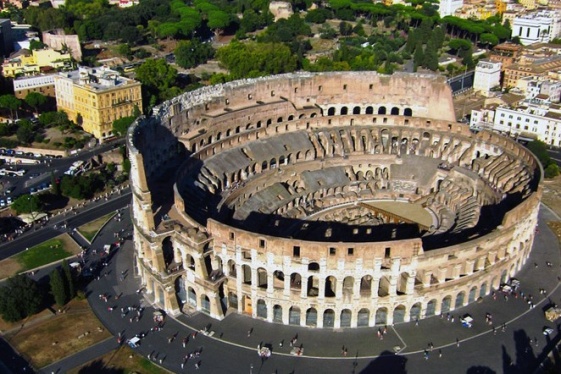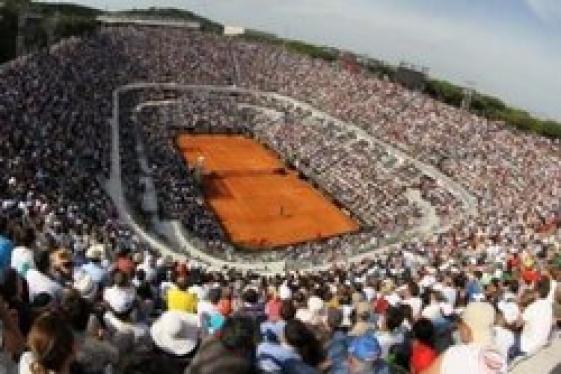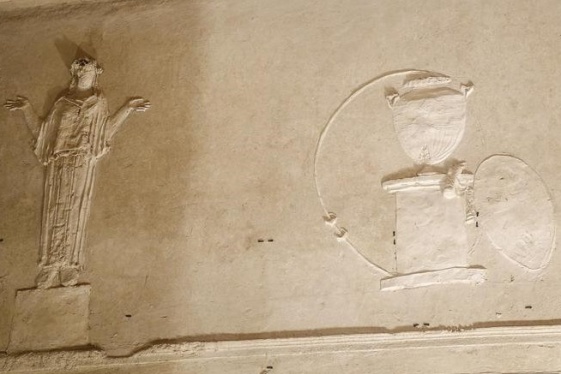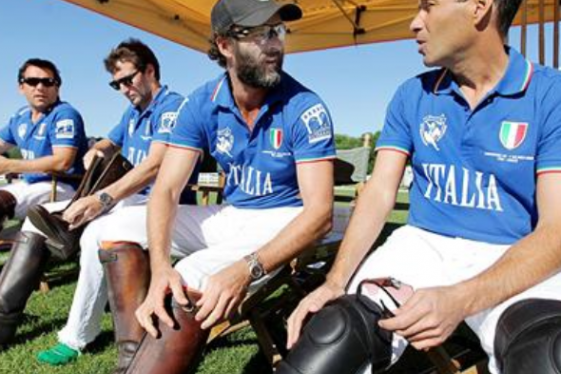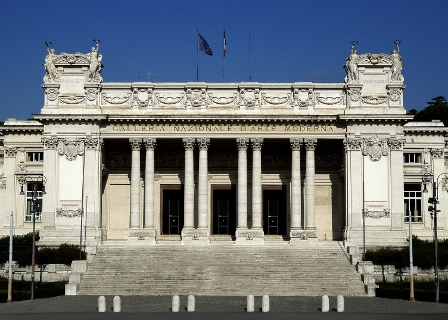

WTI Magazine #75 2016 January 18
Author : Giulia Carletti Translation by:
Nineteenth and Twentieth century art enthusiasts will find their temple in the eternal city, at Galleria Nazionale d'Arte Moderna e Contemporanea (GNAM). Founded in 1883 in Rome, GNAM was born out of the efforts and the foresight of strong personalities, and from the need for an Italian national art. Today, the Museum hosts the hugest collection of contemporary art in Italy. After around 30 years at Palazzo delle Esposizioni, in 1915 the Museum moved to its current seat: to the building created by Cesare Bazzani.
GNAM's initial curatorial arrangement revolved around regional schools, in which the artworks represented those newest trends of Italian art still "officially admitted" (Verismo, Symbolism, and Decadentism). However, it was not until Palma Bucarelli's governance - from the mid 1940s until 1975 - that the GNAM entered its golden age, experiencing a fertile expansion and a new cultural awareness. International and contemporary leading artists such as Picasso, Pollock, Mondrian, Burri, Capogrossi, and Manzoni began to be exhibited and to be part of the main collection. Moreover, in the 70s and the 80s, GNAM acquired important house-museums and artist-studios in Italy, such as Praz Museum, Boncompagni Museum, Manzù Museum, and Andersen Museum.
This contributed to the Museum's international prestige. By the end of the century, GNAM had acquired the status of "Museo Madre" ("mother museum," or "chief museum"), as it collected 19th and 20th century art. However, in 2011, GNAM's curatorial path changed into a new one, which better suited the Museum's role as a national-cultural institution. The path, organized on two floors, follows a chronological line, displaying the artworks from the 19th to the 20th century. Each room's topic revolves around art movements and issues, artistic trends, and single artists - in the "monographic rooms." However, the thoughtfulness of GNAM's curatorial project lies in its effective didactic approach. Accordingly, the Museum does not seek to show a mere chronological history of modern and contemporary art, but it rather uses such chronological criteria to provide the viewer with the critical tools, necessary to look at a modern and contemporary work of art.
The huge central hall follows the site-specific installation Passi by Alfredo Pirri, through which the viewers are forced to pass by trampling a pavement of broken glasses, on which classical statues stand. The viewers perform a quasi-cathartic act before accessing the collection. The first room is indeed a huge hall, which shows those artworks that mostly created scandal within the art world when acquired by GNAM in the 50s and 60s. Duchamp, Fontana, Burri pervade the room with their disruptive yet eternal work, making the viewers question the ever-debated concept of art. Here, the museum enters the mind of the same viewers, by preparing them to face such an uncomfortable issue and by challenging their thoughts on what art should actually look like. Whereas the classical notion of art is considered surpassed by the art world, it might not be regarded as such by common viewers. This is why the huge entrance hall is also the last one, in which viewers end the journey they have made through the whole history of modern and contemporary art, from Neoclassicism to the Avant-gardes, from Romanticism to Arte Povera.
This curatorial path shows how the entire collection of the GNAM aims thus at giving a vaster public – not necessarily an art-cultured one – a new perspective on the same works of art that it experienced at the entrance. In this way, viewers are invited - somehow - to leverage on art education in order to find out what it actually means to critically think about art.
You may be interested
-
Exciting Palatine. Interview with Clementina...
You can tell she fills with excitement when she has the chance to show an important archae...
-
Italian Open's History and Records: A tale o...
For Italians, and Romans in particular, the Open is not just a tennis tournament where cha...
-
'Basilica of Mysteries' reborn in Rome
The so-called 'Basilica of the Mysteries' has been reborn in Rome. The basilica, one of th...
-
'Carbonara Day' celebrates famous pasta dish
On Friday, April 6, the world will celebrate "Carbonara Day", an occasion launched by the...
-
'Gladiators' bring Roman flavor to R.I. polo
As thousands of sharply dressed spectators converged on the turf of Newport International...
-
'Hot priests' grace Rome's calendar
It is officially called the Calendario Romano, or Roman Calendar. But on the streets of Ro...
-
'No one should be left behind': Italian teen...
A 15-year-old boy, known as Simone, has become an overnight internet sensation after stand...



